The Metropolitan Museum of Art in New York: all sorts of weapons stuff in an incredible amount
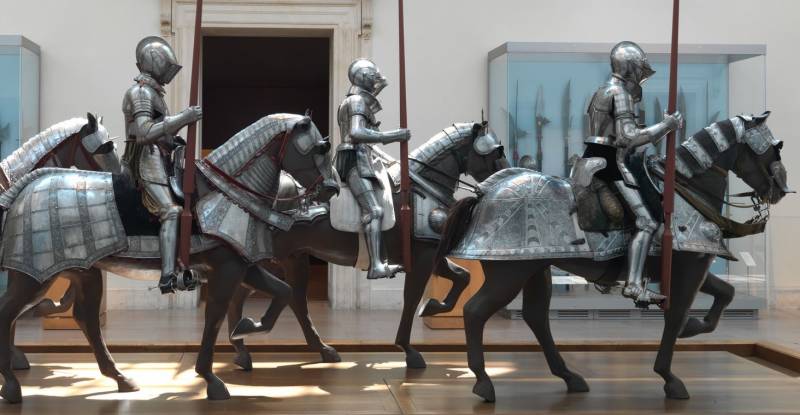
Cavalcade of knights-gendarmes in the main hall of the department weapons and armor of the Metropolitan Museum invariably attracts the attention of everyone who goes there!
for He gives you power to acquire wealth.”
Deuteronomy 18: 8
Military museums of the world. So, today we are directing our steps to the museum, whose collections we have used here on the VO website many, many times. But even a small part of them were not seen. Because as soon as on its website there are more than 14 thousand exhibits, the photos of which are in public use (belong to the category "public domain"). It’s just hard to watch them all, and digging into them is downright “like death.” But this museum has almost everything. And maybe he suffers from some eclecticism, but on the other hand, he exhaustively covers the same genesis of knightly weapons. But today we have a different purpose of his visit.
We will see ... “everything that comes to hand”, and the main attention will be paid to where this or that exhibit came from in this museum. And then last time, when we visited the museum in Philadelphia, some of our readers had questions about where the royal armor came from across the ocean, and whether the treacherous Americans stole them from Germany after 1945.
Today we will kill two birds with one stone: we will meet the artifacts themselves (and they are worth it!), and at the same time we will learn about their origin. To begin with, let's get acquainted with history collections of weapons and armor of this museum.
It turns out that the Arms and Armor Department was established at the museum in 1912, thanks in large part to the efforts of its founding curator, Dr. Bashford Dean (1867–1928). Even before that time, however, the museum's trustees had made valuable acquisitions of weapons and armor, and most notably bought the collection of European arms and armor assembled in France by Maurice de Tallirand-Périgord, duc de Dino (1843–1917), in 1904.
In 1913, the museum received a gift of an outstanding collection of European weapons and armor, collected over fifty years by the American William H. Riggs (1827–1924), who lived most of his life in Europe and was engaged in the search for historical monuments and artistic weapons.
Between the First and Second World Wars, a number of ancestral, dynastic and private collections were partially or completely sold out, which led to a significant replenishment of the museum's funds. In 1919, most of the art collections formed by J. Pierpont Morgan (1837–1913) were also transferred to the museum.
This included a magnificent parade helmet made by Filippo Negroli of Milan in 1543. A valuable gift, consisting of more than 350 European small swords, hunting swords and daggers, was made in 1926 by the Parisian collector Jean Jacques Rubel (1851-1933), and not just like that, but ... in memory of his wife and mother, natives of New York. York.
In the years that followed, the volume and importance of the collections continued to grow steadily, in particular with the acquisition of items from the estate of Bashford Dean and the unique collections of Clarence Mackay (1874–1938) and William Randolph Hurstom (1863–1863).
More recently, the Met's collection has grown even larger with gifts from collectors in honor of the museum's 150th anniversary, most notably a generous gift from Ronald S. Lauder, who donated his collection of European arms and armor to the museum. That is - no matter how strange it may seem to our people, who are used to the fact that we have all the museum relics of the state, there - they were all private property, donated to the museum ...
We also had collectors in Russia. But they were bred clean after 1917. Hence the misunderstanding of our readers, why is it there in such a way, and not like ours. And there was no total expropriation of an entire class, that's all. But it's all like this: "thinking at the front door."
And now we will “go inside” and look or just admire “all kinds of weapons stuff” ... So ...
Let's start with the most ancient ... Greek helmets and from the island of Crete, dating back to the end of the XNUMXth century. BC e. In the photo you see one such helmet, a Cretan one, which is the best example among the large number of armor found in south central Crete, where they were made.
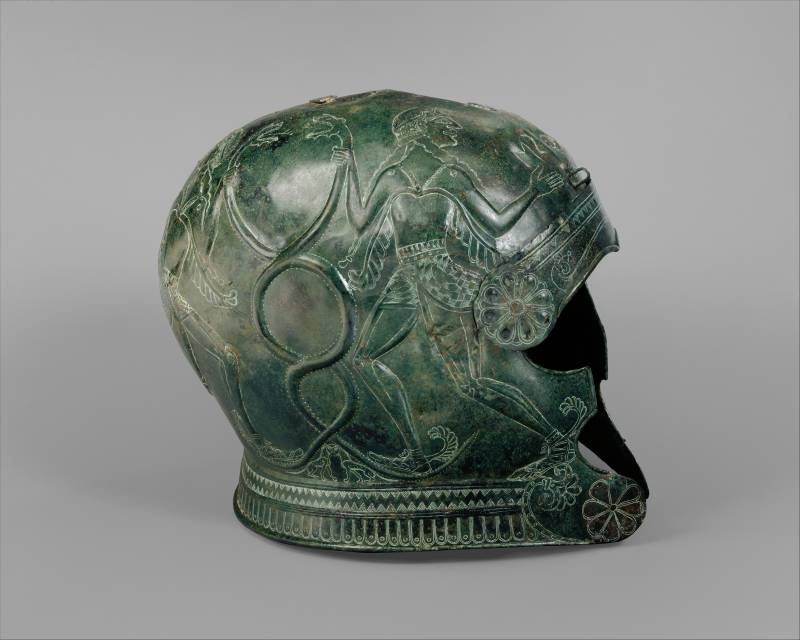
Here is the helmet. On both sides of it is a pair of winged youths clutching intertwined snakes. Below them are two panthers with one common head. On the helmet is the inscription "Neopolis". Donation by Norbert Schimmel, 1989
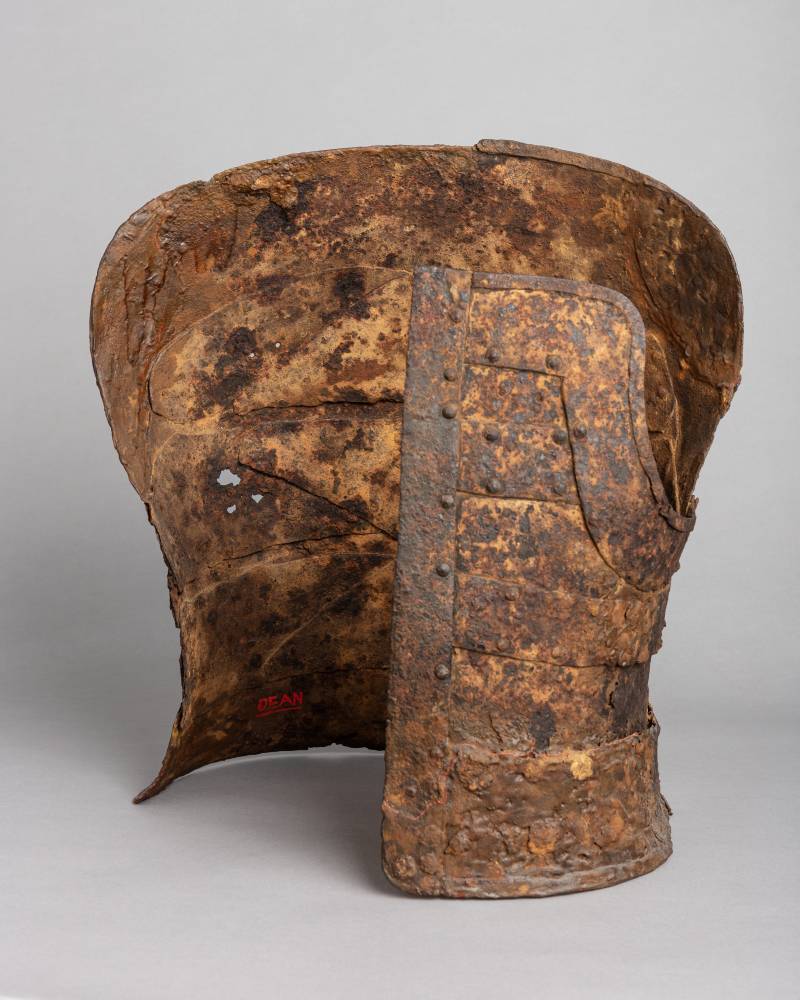
A very interesting artifact: Japanese tanko armor made of iron bands of the 3th-884th centuries. Front view. Weight 1914 Donation by Bashford Dean, XNUMX
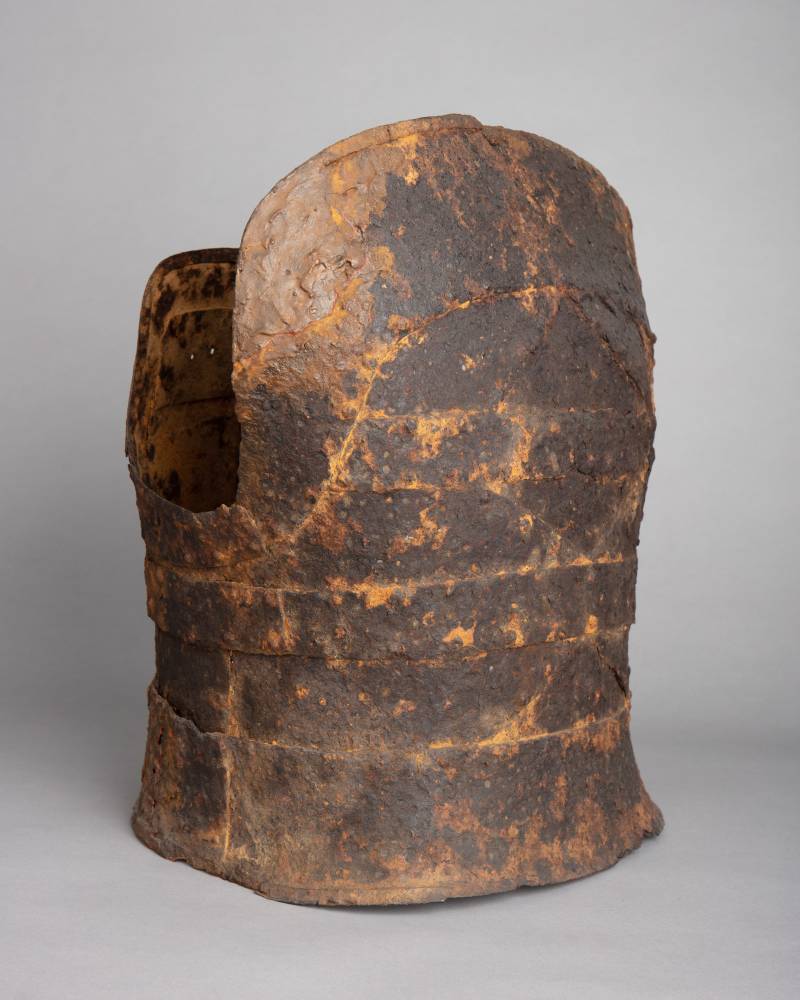
The same armor - rear view
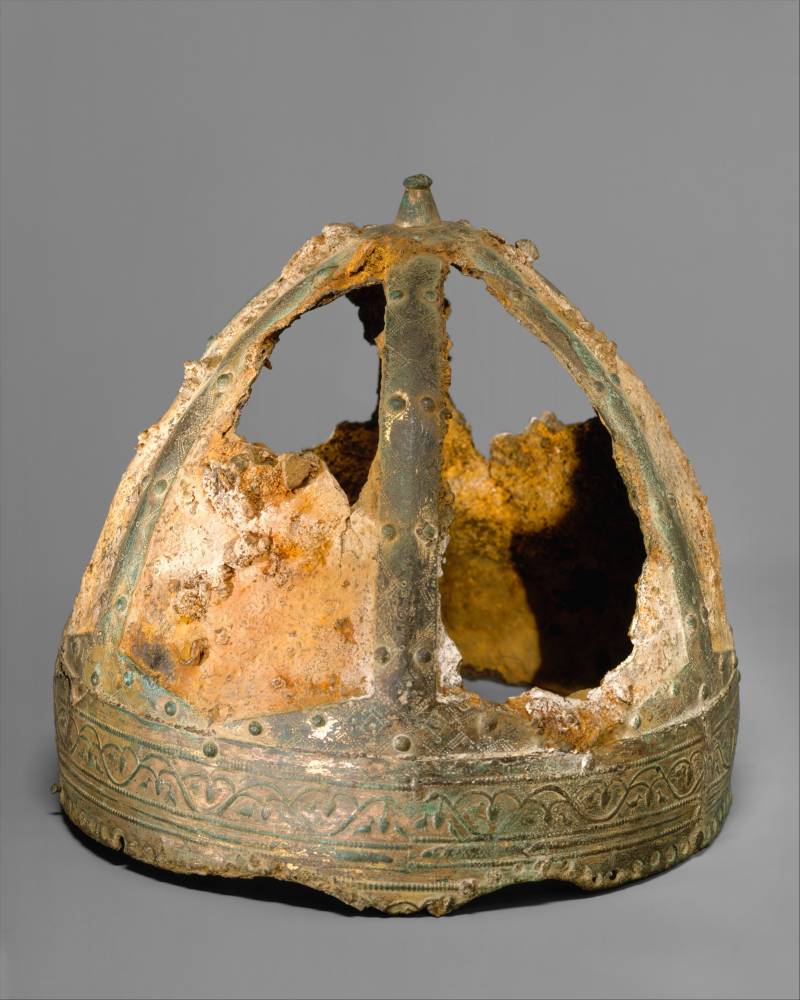
The well-known spandenhelm, also VI-VII centuries. Most likely Byzantium. Iron plates on a bronze frame. The places where such helmets have been found are scattered all over the world, from Sweden to Germany and from the Balkans to Libya. A helmet from the Metropolitan Museum of Art was found in the Saone River near Trevou, France. The quality of the helmets and their varied locations suggest that they were made as diplomatic gifts to foreign rulers and may have been sent from Byzantium or the Ostrogothic kingdom in Italy. All helmets originally had metal cheek pads, chain mail neck protection, and often a built-in nose. As on this helmet, the decoration usually consists of embossed patterns and birds among a wavy vine embossed on the browband. Some examples include the image of the cross and other Christian symbols. Helmet weight 907 Donation by Stephen W. Granxay, 1942
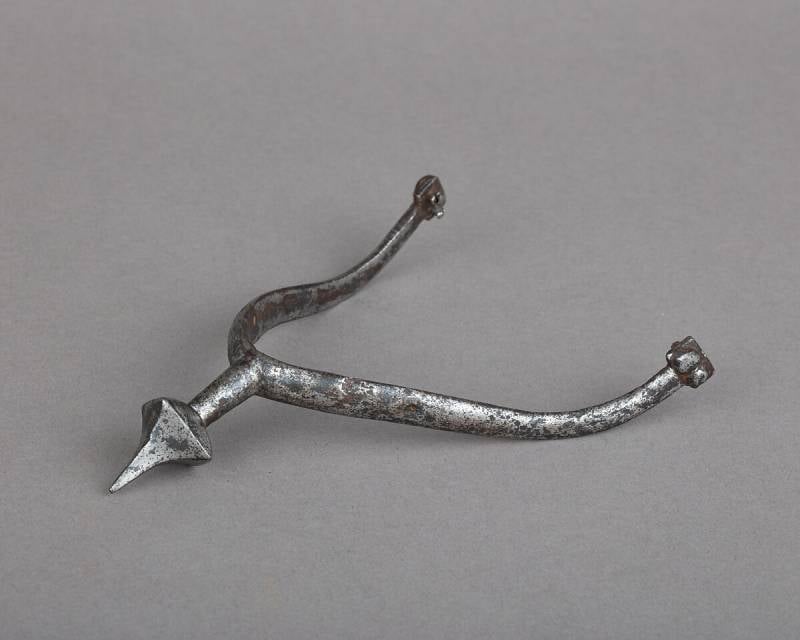
Knight's spur of the XII century. Weight 62,4 g. Again, a gift from Stephen W. Granxay, 1942.
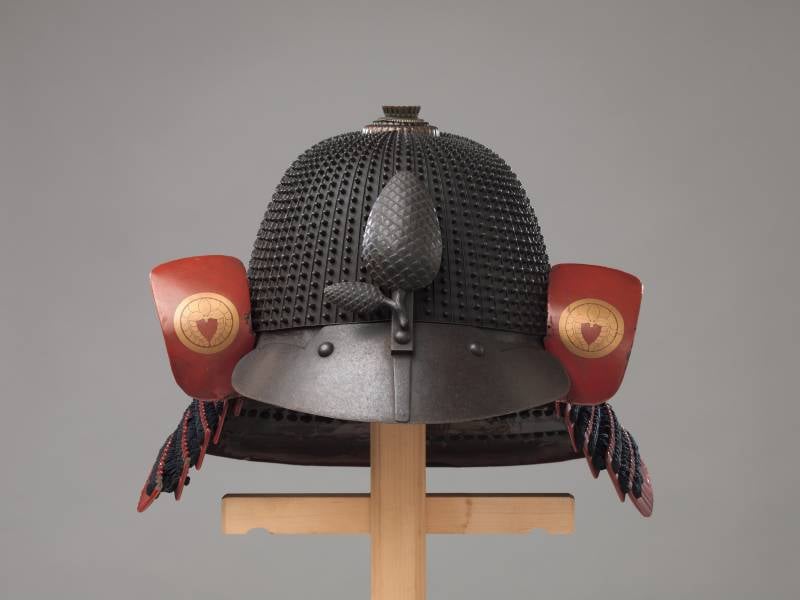
Hoshi-kabuto, helmet from Japan, 1936th century Howard Mansfield Collection, Gift of Howard Mansfield, XNUMX
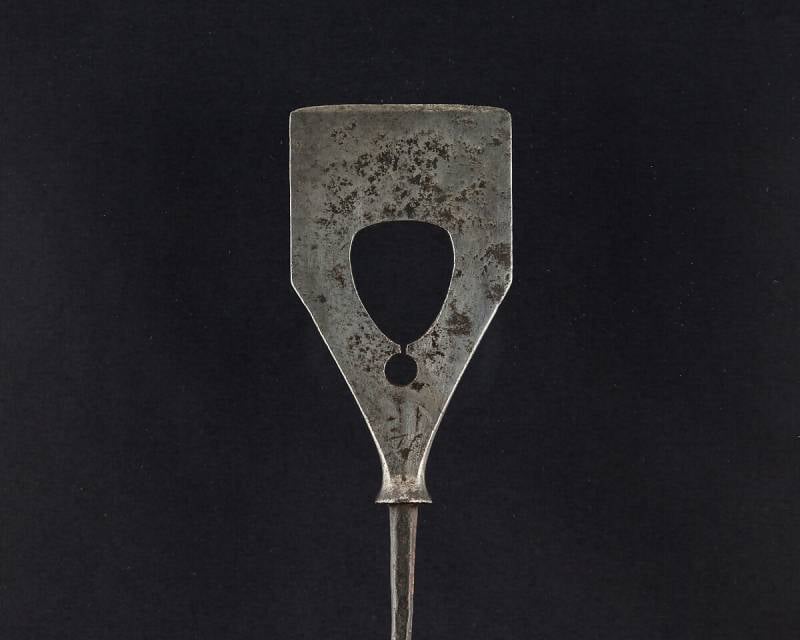
Japanese arrowhead. Weight 62,4 g. Collection of Giovanni P. Morosini donated to the museum by his daughter Giulia, 1932
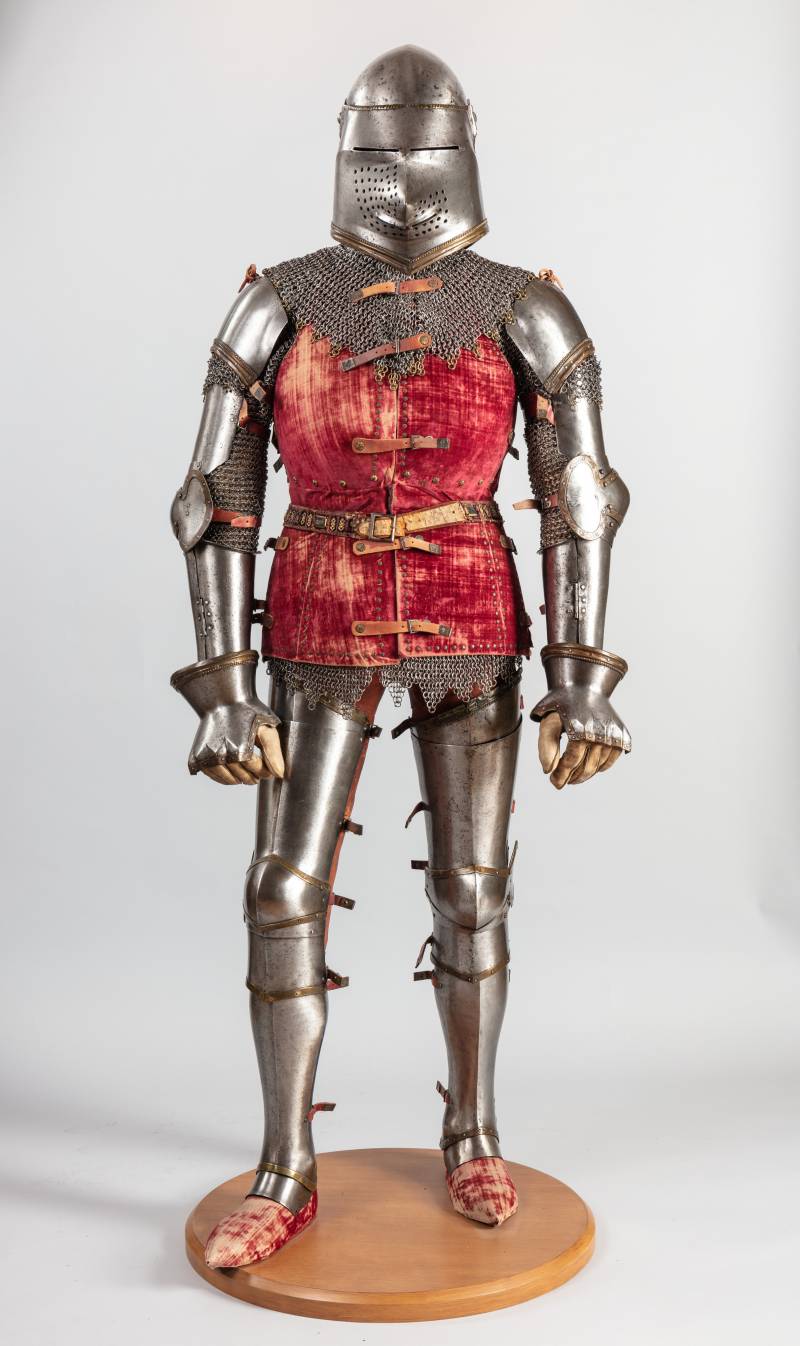
The museum was very lucky in that it got this armor from the beginning to the middle of the 1400th century. These are Italian armor approx. 1450–1920, collected and restored in the 1470s using individual elements found in the ruins of the Venetian fortress of Chalkis on the Greek island of Euboea, captured by the Turks in 1400. The aim was to represent a full body armor worn around 168,9, a period from which no full body armor survives. Its distinctive feature is the early form of the shell (brigandin) with two large chest halves and brass borders along the edges of the protruding plates. Helmet, bascinet with visor, Bundhugel type. The velvet covering of the shell dates back to the beginning of the 18,6th century. Armor height - 1929 cm, weight - XNUMX kg. Bashford Dean Memorial Collection, a gift from Helen Fanestok Hubbard, in memory of her father, Harris S. Fanestok, XNUMX
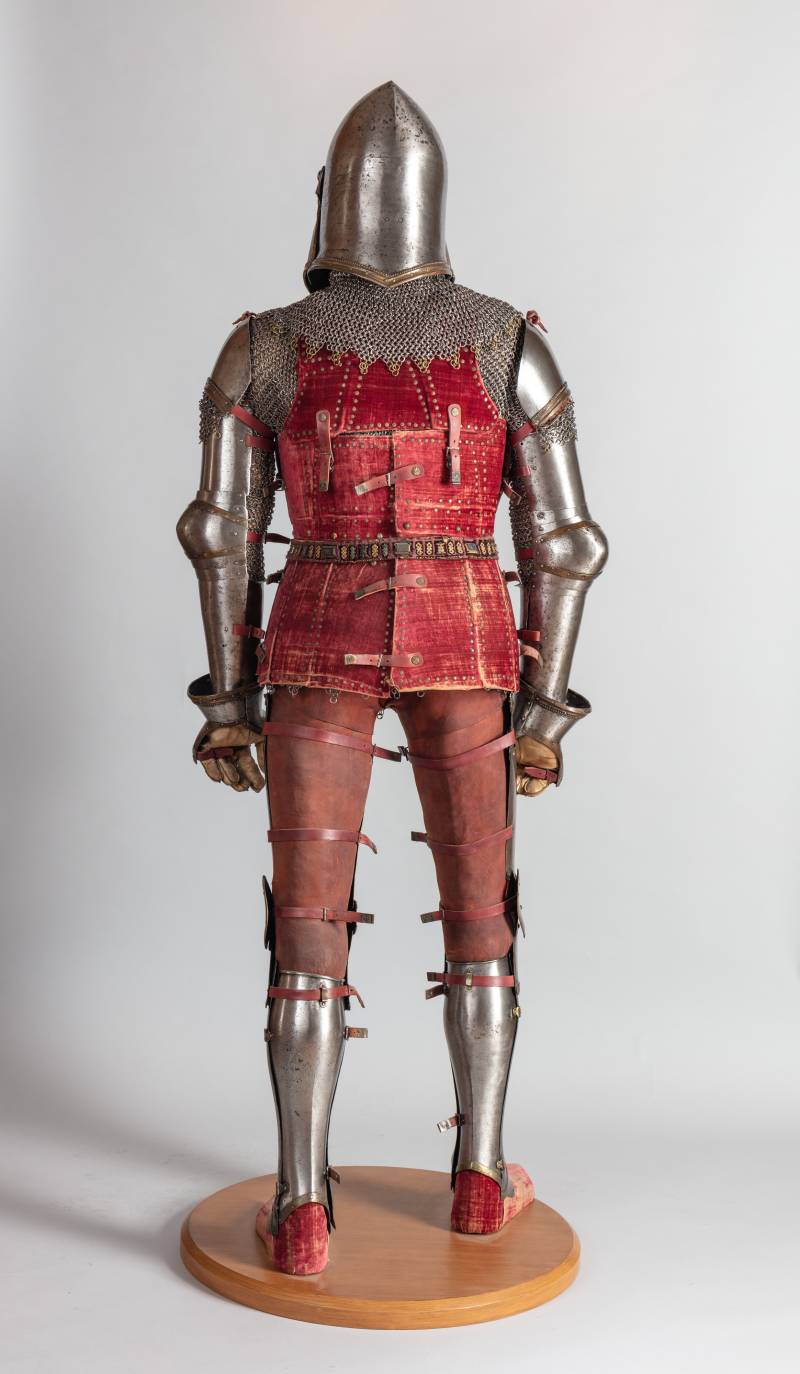
And he's in the back
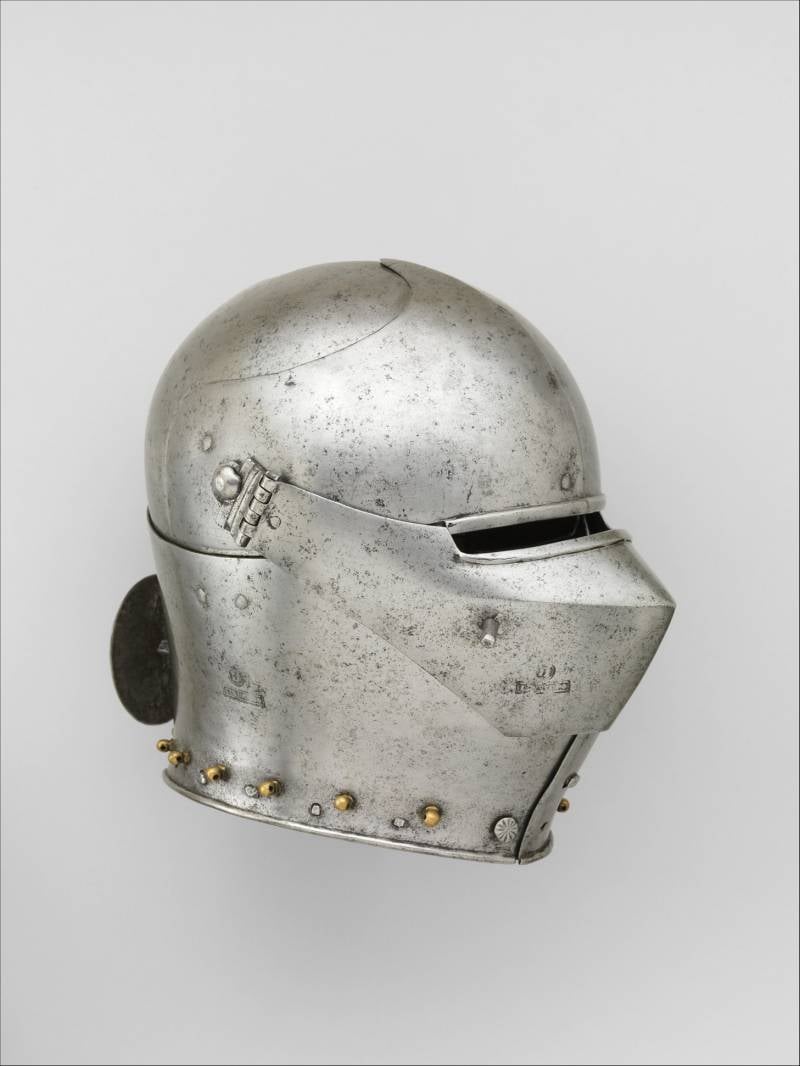
A very simple helmet (we saw this in the collection of the Philadelphia Museum) 1440 Milan. Weight 4 196 Donation by Stephen W. Grancsay, 1942
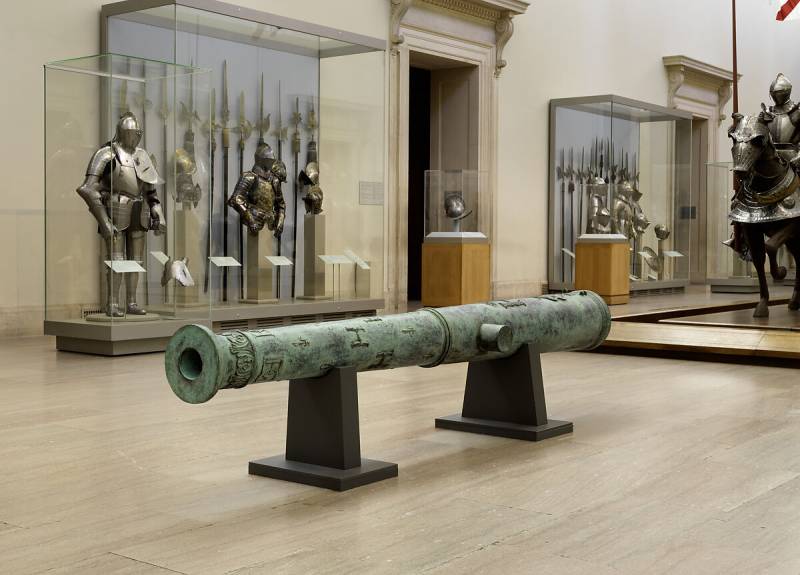
But this is a very recent gift: a tool from 1550. Weight 1 kg. Purchased by Ronald S. Lauder and Alejandro Santo Domingo. And the gift of Mr. and Mrs. Mark Fish, 209
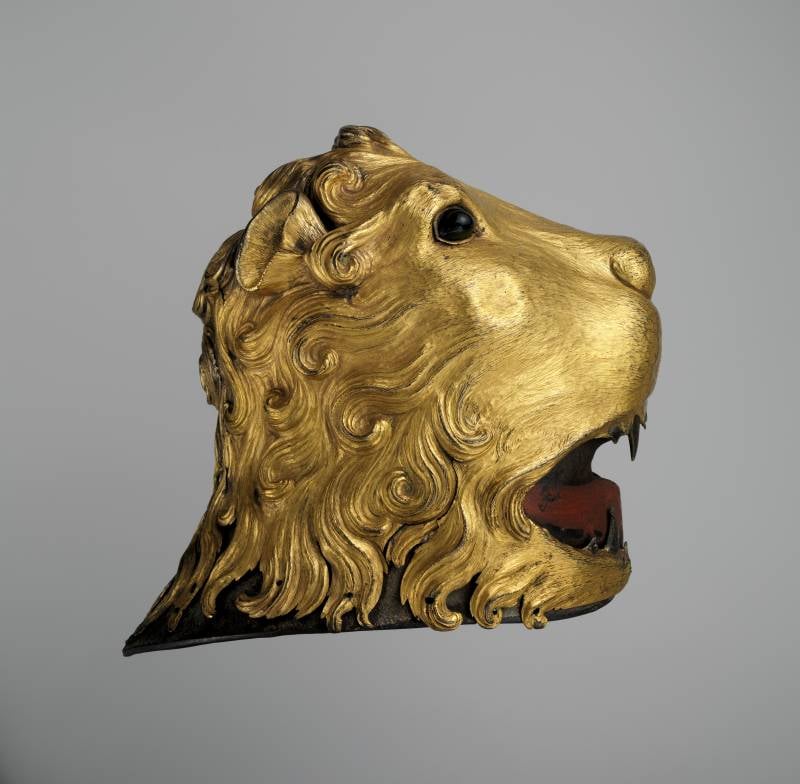
Sallet in the shape of a lion's head, ca. 1475–1480 This helmet is the earliest surviving Renaissance (antique style) armor. The lion's head is an outer shell of embossed and gilded copper that is worn over a simple steel helmet. It represents the head of the Nemean lion, whose skin was worn as a headdress and cloak by the mythological hero Hercules. He was often depicted in Renaissance art as a symbol of indomitable strength, courage and perseverance. Weight 3 donated by the Harris Brisbane Dick Foundation, 574.
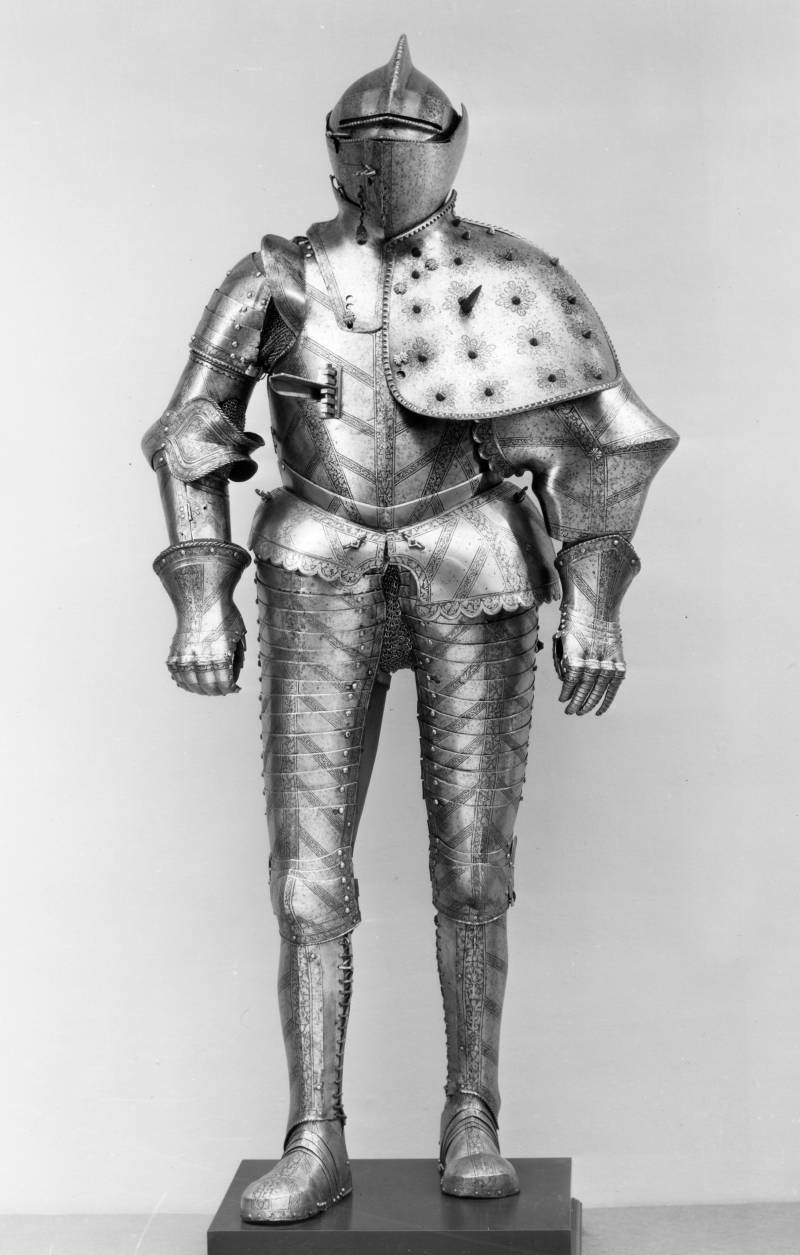
Tournament Armor 1585. Bashford Dean Estate Memorial Collection, Bequeathed by Bashford Dean, 1928
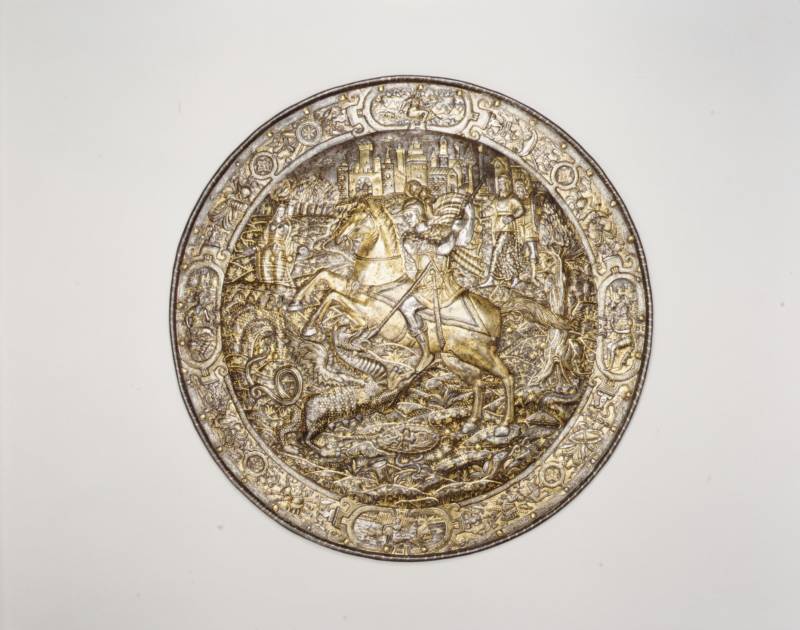
Ceremonial shield depicting St. George slaying the dragon. OK. 1560–1570 Milan. Diameter 59,1 cm. Weight 3. Gift of William H. Riggs, 810.
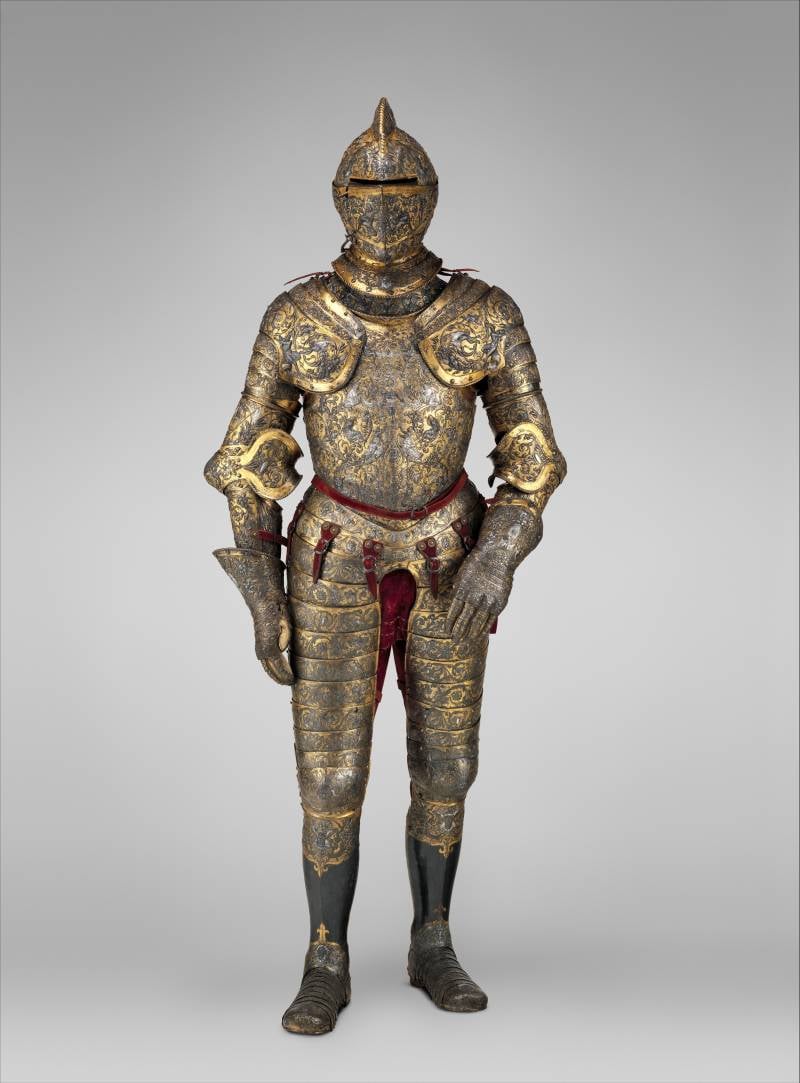
Armor of Henry II, King of France (1547–1559). Front view
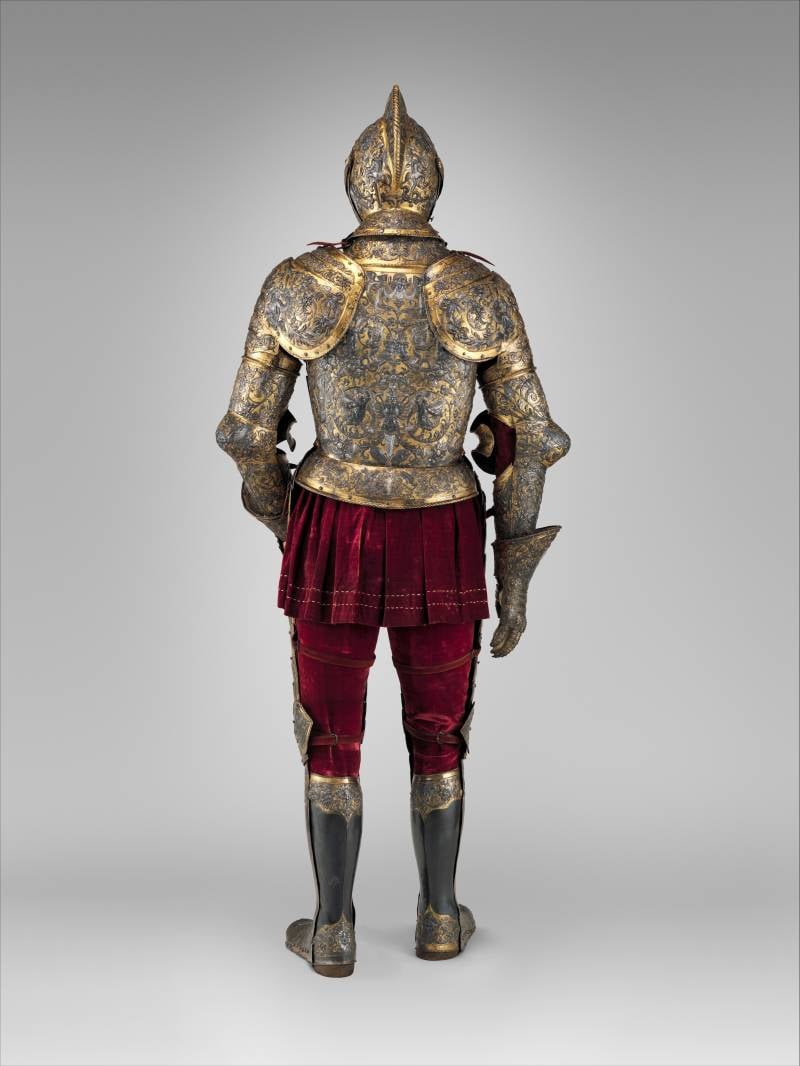
The same armor. Back view
The work of design masters Jean Cousin the Elder, nicknamed "Frenchman" and Baptiste Pellerin, also ... "Frenchman", ca. 1555. It is one of the most elaborate and complete French dress armor, retaining much of its original coloration. The surfaces are covered with dense whorls of leaves inhabited by human figures and a variety of fairy-tale creatures derived from the Italian grotesque.
In the center of the chest is a Roman warrior, to whom two kneeling women offer swords. On the shoulder pads are the figures of Apollo chasing the nymph Daphne (in front) and Apollo with the killed monster Python (behind). The crescent, one of the heraldic signs of Henry II (I remember we had a reader in VO who seriously convinced that this was a sign of the Muslim faith of this person!), Is depicted in several places.
Twenty original sketches of this armor have been preserved. One belongs to Jean Cousin the Elder; the rest - to Etienne Delon or Baptiste Pellerin. All three are outstanding Parisian artists of the mid-187,96th century. Material: steel, gold, silver, leather, fabric. Height - 24,20 cm; weight - 1939 kg. A donation from the Harris Brisbane Dick Foundation, XNUMX.
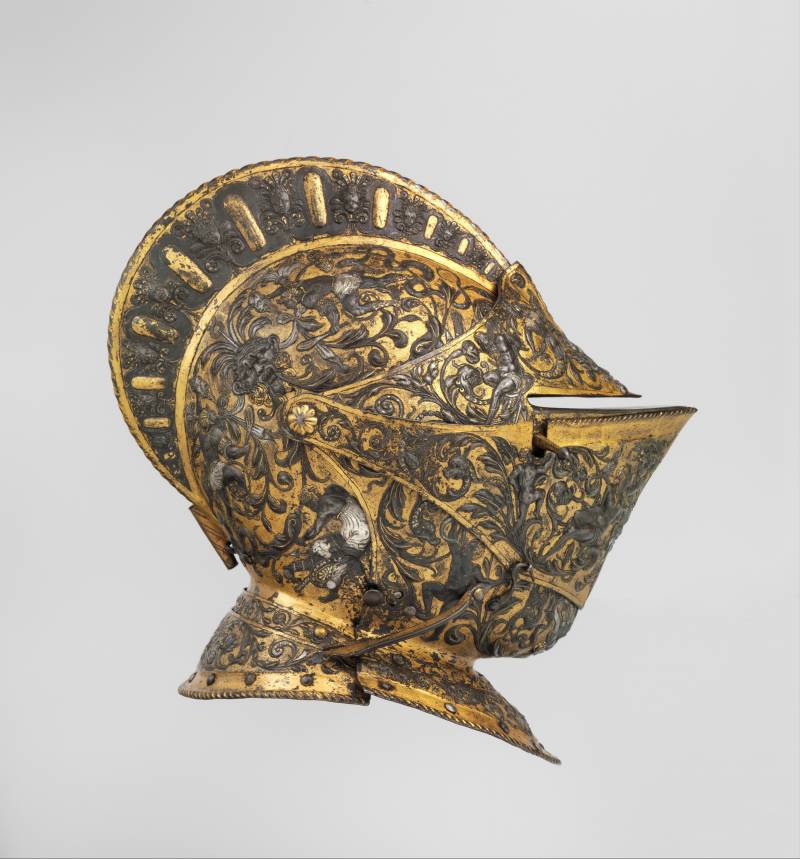
This armor's helmet
Interestingly, in his 1583 book The Anatomy of Abuses, the English moralist Phillip Stubbs attacked the growing trend to wear weapons as a stylish accessory, condemning upstart dandies who sported "swords, daggers and rapiers, decorated with expensive engravings." Stubbs's main concern was that men of all classes were succumbing to the whims of fashion and began to wear weapons daily as decoration, giving way to vanity and pride, and at the same time erasing the boundaries of their social position.
The tradition of decorating weapons and armor according to the latest trends and styles was not new in Stubbs' time, but is as old as the existence of military items in cultures around the world. It flourished and became especially prominent in Europe from the XNUMXth century, and this is what Stubbs really, really disliked.
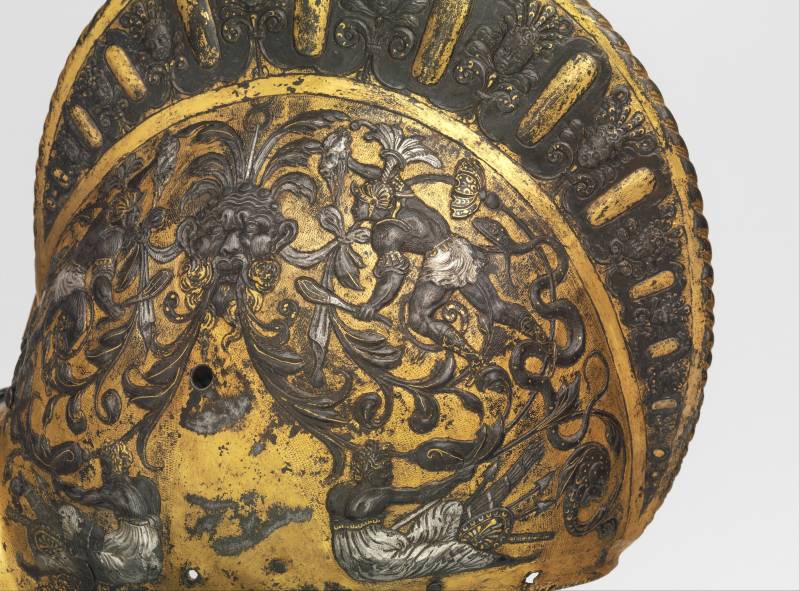
Figures on the helmet
He believed that it was shameful to impress others and convey some meaning with the help of personalized images and ornaments on armor. And just the armor of King Henry in this regard is very indicative. After all, you can see the letter “H” on it, that is, the emblem of his mistress Diane de Poitiers, woven into a thick web of antennae and grotesques, and even with small figures taken from classical Greek mythology.
That is, gunsmiths, blacksmiths, manufacturers of swords and weapons had to take care of the form and functionality of their products, but also be aware of the latest trends, both in ornaments and in technology.
As fashionable status symbols, guns, armor, and swords not only spoke of the wearer's willingness and ability to fight, but also demonstrated their awareness of cosmopolitan trends in artistic fashion and innovation in armor decoration. Therefore, by the way, starting from the XNUMXth century, ornamental etchings and engravings with patterns on armor became an important auxiliary tool in the production of fashionable and complex weapons. And ... they bring help to today's scientists, helping to attribute and date it.
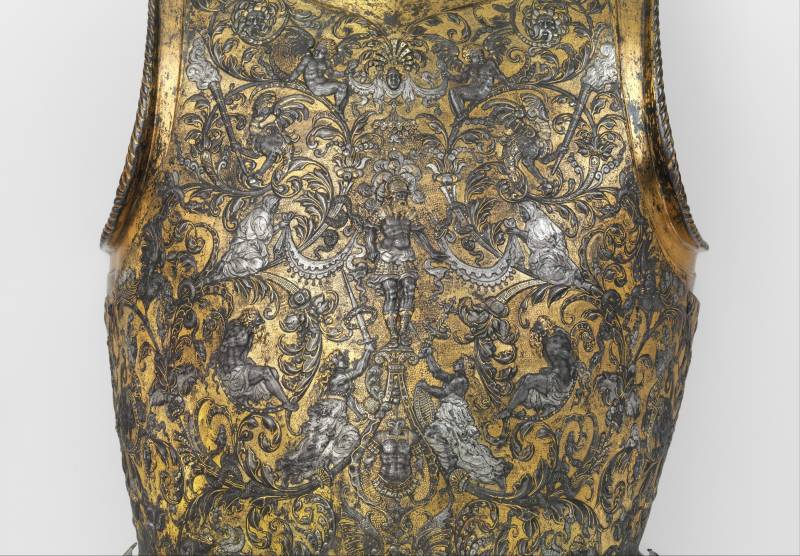
Cuirass of the Armor of King Henry II
Field armor of King Henry VIII of England (1509–1547). Italian work, Milan or Brescia. OK. 1544 This impressive armor was made for Henry VIII at the end of his life, when he was overweight and suffering from gout.
Probably worn by the PRC king during his last military campaign, the siege of Boulogne in 1544, in which he personally commanded the troops, despite all his ailments. Initially, it was equipped with a removable reinforcing breastplate, to which a spear rest was attached, and reinforcement for the left shoulder pad. A pair of bracers remains in the Royal Collection at Windsor Castle.
In a posthumous inventory of royal property, compiled in 1547, the armor is described as "Italian". They may have been supplied by a Milanese merchant known in England as Francis Albert, who received a license from Henry to import luxury items, including armor, into England for sale.
Subsequently, the armor was transferred to William Herbert (c. 1507-1570), the first Earl of Pembroke, Henry's squire and executor of his will. They were recorded at Wilton House, the residence of the Pembroke family, from 1558 until sold in the 1920s.
The armor is an early example of "anime" armor, that is, armor in which the breastplate and pauldrons consist of horizontal, overlapping plates connected by movable rivets and internal leather straps.
The decoration of the armor consists of foliage, putti figurines, running dogs, renaissance candelabra and grotesque ornamentation, i.e. typically Italian. Dimensions: height 184,2 cm; width 83,8 cm; weight 22,91 kg. Harris Brisbane Dick Foundation donation, 1932.
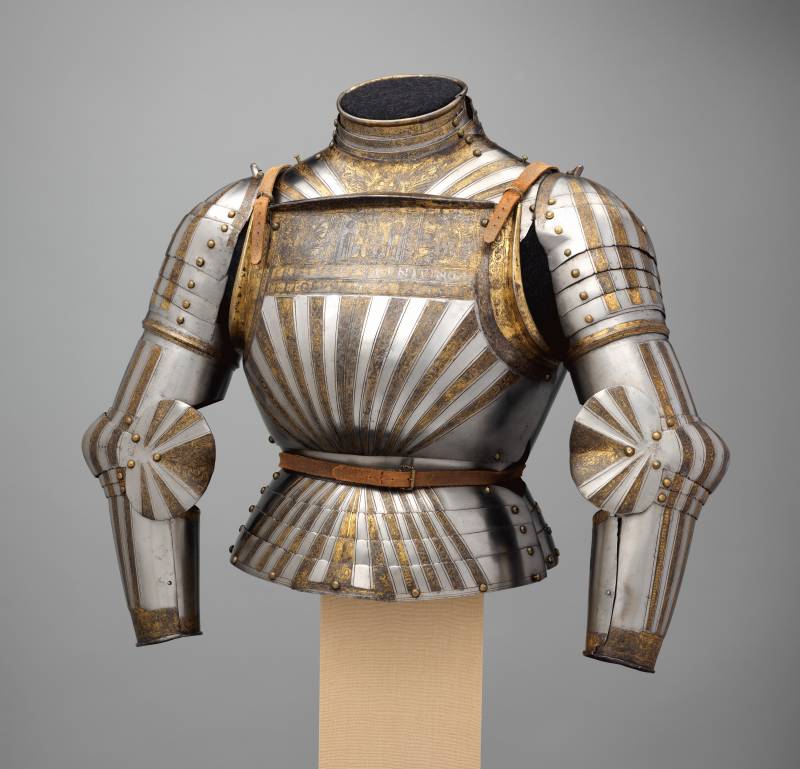
Cuirass of light cavalry armor alla Tedesca (in the German style). Milan. OK. 1510 This is a rare example of Italian armor, decorated with corrugated surfaces in the German style. Its engraved and richly gilded decor is inspired by Christian symbolism and the Bible. The strip at the top of the breastplate depicts the Virgin and Child in the center, St. Paul on the right and St. George on the left. The Latin inscription below reads: CRISTVS RES VENIT IN PACE ET DEVS HOMO FACTVS ES (Christ the King came in peace and God became man). Another inscription at the top of the back plate reads: IESVS AVTEM TRANSIENS PERMEDIVM ILORVM IBAT (But Jesus, passing through the midst of them, went his way [Luke 4:30]). The Trinity - Father, Son and Holy Spirit - depicted on the obverse side of the gorget 1510. Weight 8. Gift of William H. Riggs, 987.
So, as you can clearly see, all the artifacts shown here are donations. In total, of course, there are more than 14, and among them you can find purchases. But the most valuable exhibits of the Metropolitan Museum of Art are donations!
PS
Photographs (public domain) from the Metropolitan Museum of Art in New York were used for the design of the material.
Information